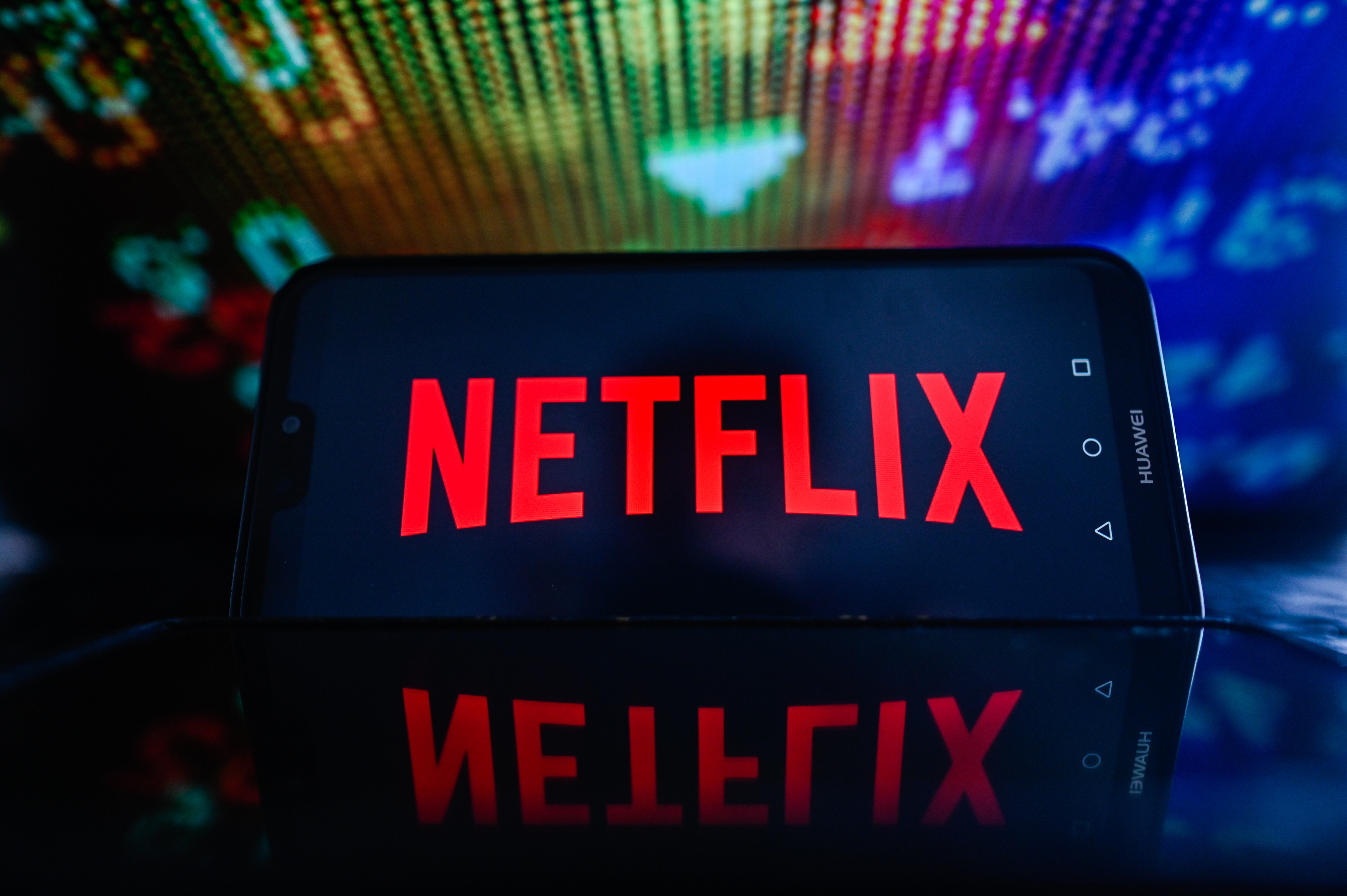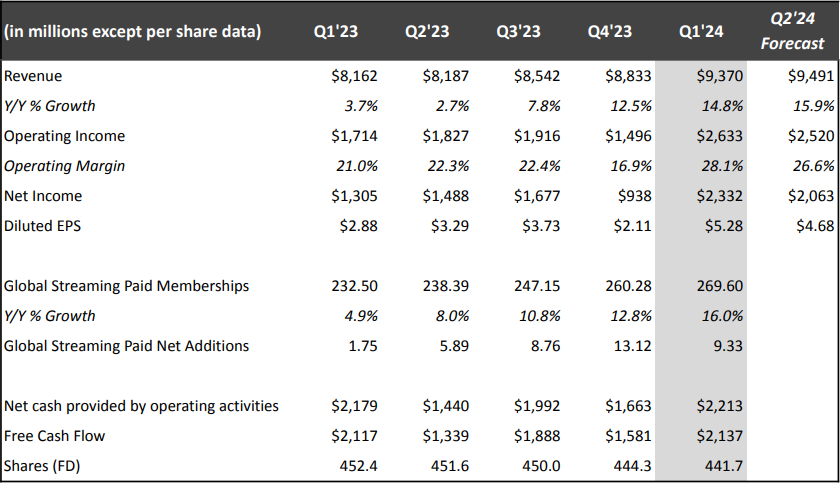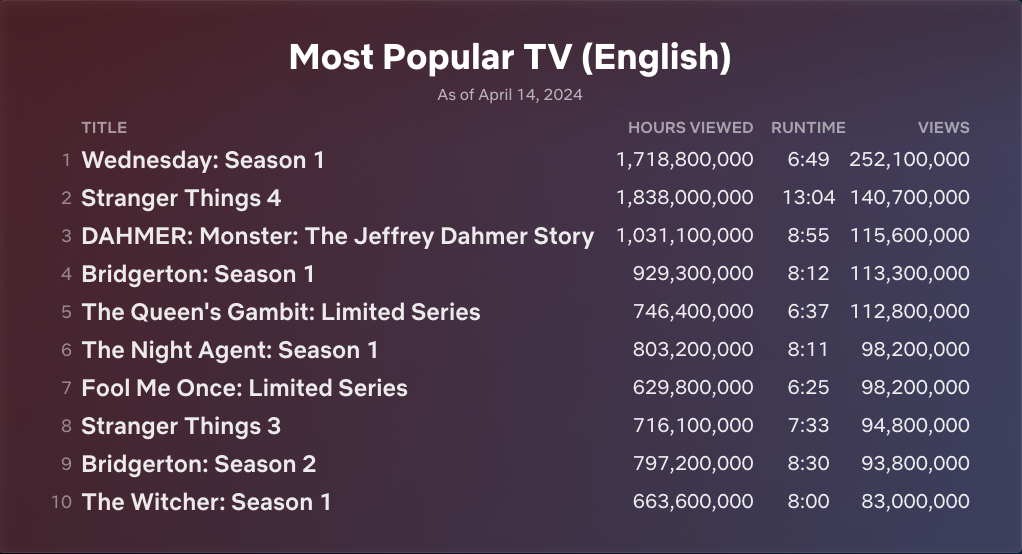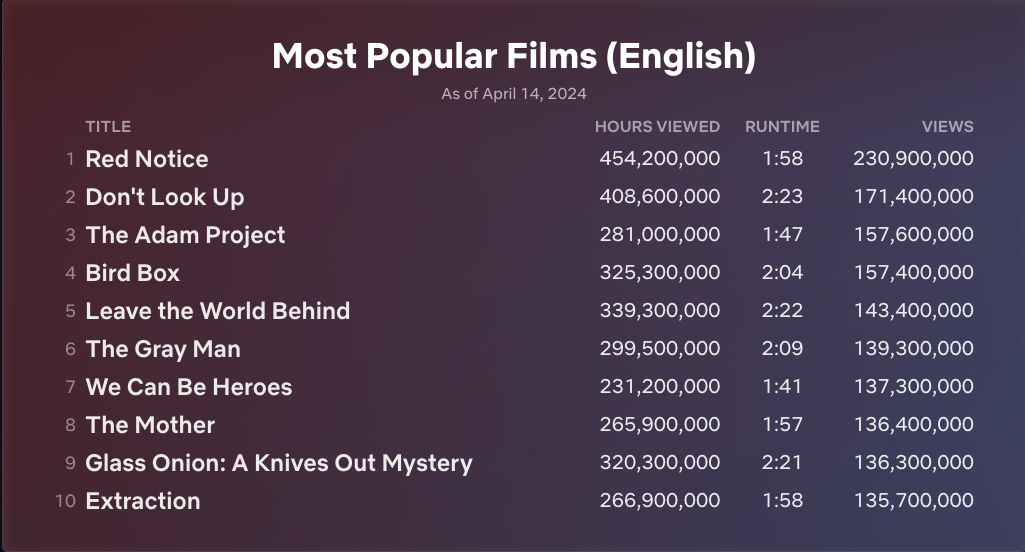
As predicted, Netflix reported a blowout first quarter, exceeding its own revenue growth guidance at 14.8% to $9.37 billion, while adding 9.33 million more customers to up its global base to a hair away from 270 million members.
By comparison, Netflix revenue grew only 3.7% year over year in the first quarter of 2023, and the streaming company only added 1.75 million new members worldwide.
Net income was up 79% year over year to $2.332 billion, while free cash flow was up narrowly to $2.137 billion.
Netflix forecasted revenue growth of 16% for the second quarter.
Netflix management attributed the big Q1 performance to more hits -- series Griselda, The Last Airbender and 3 Body Problem received shareholder letter shoutouts.
And Netflix also pointed to additional revenue streams, including its ad-supported tier and the conversion of former password sharers into paid memberships.
Paid subscribers were up 2.53 million in the fourth quarter in the U.S. and Canada, where Netflix started cracking down on account sharing a year ago. With 82.66 million customers in the UCan region, Netflix is up more than 8 million users in the last 12 months.
Meanwhile, Netflix said subscribers to its ad-supported tiers globally are up 65% over the first quarter of 2023.
Still, Netflix stock was initially down around 5% in after-hours trading on the Nasdaq following the publication of its first-quarter letter to shareholders.
According to MarketWatch, Wall Street is reacting to "tepid sales guidance," with Netflix projecting $9.49 billion in Q2 revenue and the Street forecasting $9.53 billion.
Investors might also be reacting to this little shareholder letter bombshell: "Starting next year with our Q1'25 earnings, we will stop reporting quarterly membership numbers and [average revenue per member]."
Netflix explained its reasons this way: "In our early days, when we had little revenue or profit, membership growth was a strong indicator of our future potential. But now we’re generating very substantial profit and free cash flow (FCF). We are also developing new revenue streams like advertising and our extra member feature, so memberships are just one component of our growth. In addition, as we’ve evolved our pricing and plans from a single to multiple tiers with different price points depending on the country, each incremental paid membership has a very different business impact."

Netflix's latest earnings report came nearly two years to the day after its pivotal Q1 2022 report, during which the company reported its first ever streaming subscriber loss and sent its stock price into an absolute swoon.
That event caused Netflix to develop an advertising business and crack down on account sharing globally, setting up the prosperity we witnessed today (and perhaps Wall Street's after-hours bears somehow missed?).
Interestingly, a word search on Netflix's shareholder letter surfaces the term "engagement" 14 times, with the streamer touting itself as the "leader" in that area.
"Success in streaming starts with engagement. When people watch more, they stick around longer (retention), recommend Netflix more often (acquisition) and place a higher value on our service," Netflix said in the letter.
However, none of the movie or TV show titles mentioned in the letter Thursday have come close to generating one of the platform's all-time best debut audience performances.
In fact, most of the hit movies and shows on these all-time lists achieved their benchmarks with a total Netflix user base that's significantly smaller than what exists today.
To us, this suggests Netflix's improved sales results stem from the big tweaks it made to its business model, and not so much "the hits" ... which no longer appear to have kept on comin'.









